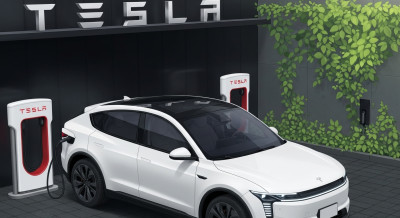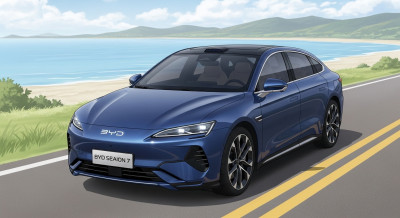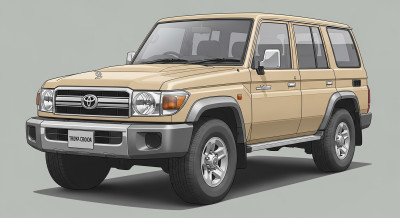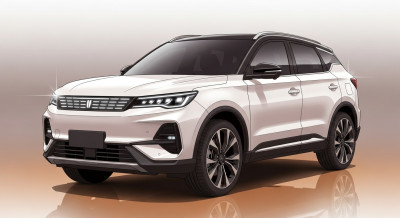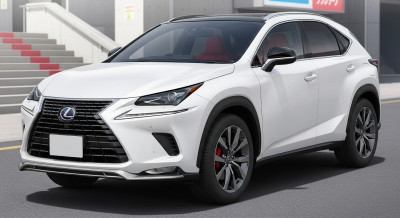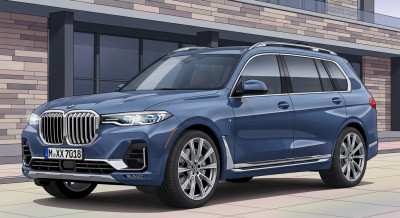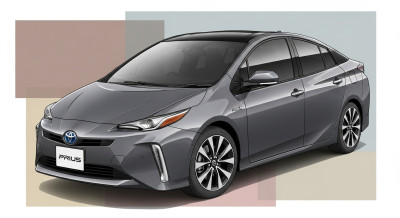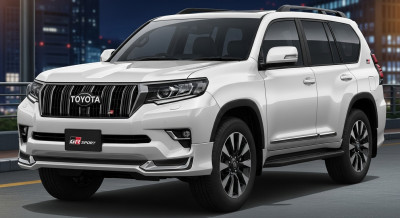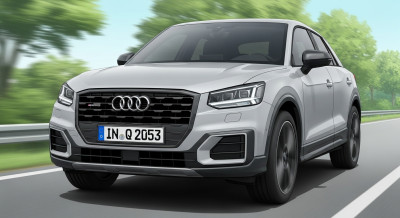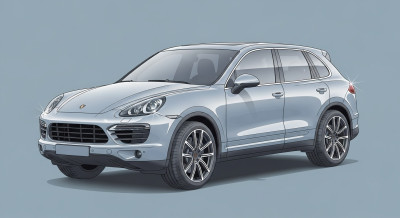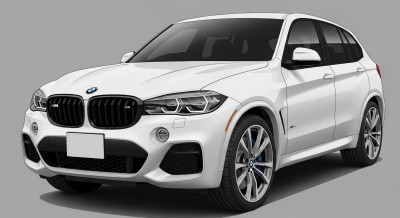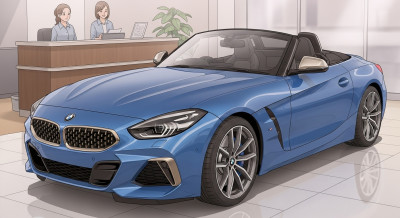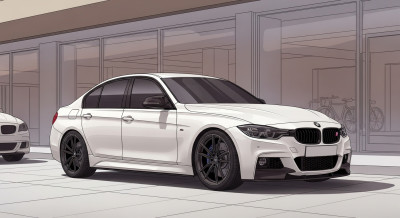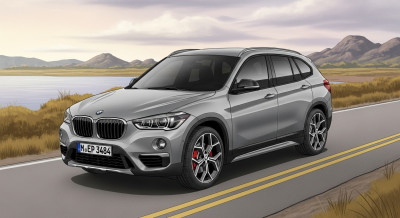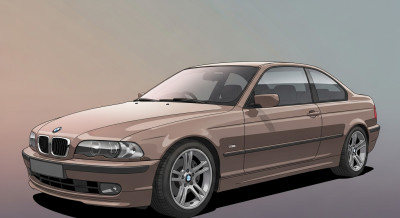2023 Nissan X-TRAIL - Great Family SUV!
Thanks: Nissan Park
https://www.instagram.com/nissanpark/
https://www.nissanparkotomotiv.com/
Nissan X-Trail review
What is it?
This is the fourth generation of Nissan’s flagship SUV, if you can believe it. It started off as a cheap and chunky pseudo 4x4 back in 2001, part of the vanguard of soft-roaders that included the likes of the Toyota RAV4 and Land Rover Discovery Sport.
Like those two cars, the X-Trail has gently poshed up and smoothed out its rough edges over the years, with Nissan trying to ape the success of its smaller Qashqai crossover in a larger format.
Indeed, the X-Trail’s main sell is that it comes with seven seats, and now in a more fuel-sipping form thanks to Nissan’s quirky petrol hybrid powertrain. Is that enough to give it the edge over the all-round packages like the Skoda Kodiaq, Kia Sorento or Dacia Jogger?
What’s so quirky about Nissan’s hybrid set-up?
It’s still on very familiar territory for most drivers – you put petrol in the petrol hole and the car moves along when you prod the accelerator. Some people care about what happens in-between, some don’t. What’s interesting about Nissan’s e-Power gubbins is that the 1.5-litre petrol engine doesn’t actually power the wheels, that’s all down to a 201bhp electric motor. The petrol bit just acts as a generator and has fancy tech that enables it to vary its compression ratio to burn petrol more efficiently at different loads.
The standard configuration is two-wheel drive, but you can spend a bit more and get your X-Trail kitted with a 134bhp e-motor on the rear axle for four-wheel drive (or e-4orce, as Nissan calls it). The onboard computer trickery tells the car to produce the power where it’s needed, which means the 4x4 version of the X-Trail produces 211bhp at the wheels.
So will I need to plug it in?
People’s reactions to the words “self-charging” will vary in extreme ways, but Nissan is marketing the X-Trail as an electric vehicle that charges itself up. Nice try. This sort of hybrid powertrain is a solid bridging technology to full electric though: instead of plugging it in, the car stores up energy that would otherwise be wasted under braking and keeps it safe in a reasonably tiny 2.1kWh battery.
There’s a mild hybrid option available too, which just has the 161bhp 1.5-litre petrol from the hybrid cars powering the wheels itself but with the help of a mildly beefed up battery that enables it to coast and use stop-start for extended periods.
The entry level mild hybrid manages the 0–62mph run in 9.6 seconds, the 2WD hybrid in eight seconds and the 4WD model in seven seconds, while fuel consumption for the three comes in at around 40mpg, 50mpg and 45mpg. We drove the e-4orce 4WD car for a week and it came reasonably close to its official figures, in the low 40s.
Is the X-Trail as posh as it thinks it is?
If you’re trading up from a lesser Nissan, or even a lesser older X-Trail, you’ll be impressed by the swanky interior that’s available in top spec trims: the 12.3in infotainment screen doesn’t pop up on the standard equipment list until N-Connecta spec, for instance, but the X-Trail feels spacious, airy and plush inside.
Likewise there’s plenty of room in the middle row of the car (the sixth and seventh seats are for child use only really) and the low window line along the doors and panoramic roof (standard on Tekna cars, optional on N-Connecta) let plenty of light in.
We didn’t rate the shiny plastics around the gear selector and touchscreen, mind – they get smeared with fingerprints and other grubbiness quite quickly. At least there are plenty of storage areas up front to hide your microfibre cloth in.
There were elements of the car we drove where the build quality let the overall package down – a bit of thunk over small bumps, say, or the variable boot floor that rattled and created a fuss over speed humps.
Any other rivals I should look at?
Beyond the Kodiaq, Sorento and Jogger, you've got the Toyota RAV4 (against which this car was benchmarked), Mazda CX-5 and VW Tiguan Allspace. Heck, we'd throw the Hyundai Santa Fe and Toyota Highlander into the mix as well, although Nissan thinks they're too large to count as direct alternatives.
What's the verdict?
“Seven-seaters are expensive to run, so anyone in the market for one will be grateful for the X-Trail's hybrid economy boost”
Read More https://www.topgear.com/car-reviews/nissan/x-trail
📌 Instagram ▶ https://www.instagram.com/cartvpress
📌 Facebook ▶ https://www.facebook.com/CARTVPres
Thanks: Nissan Park
https://www.instagram.com/nissanpark/
https://www.nissanparkotomotiv.com/
Nissan X-Trail review
What is it?
This is the fourth generation of Nissan’s flagship SUV, if you can believe it. It started off as a cheap and chunky pseudo 4x4 back in 2001, part of the vanguard of soft-roaders that included the likes of the Toyota RAV4 and Land Rover Discovery Sport.
Like those two cars, the X-Trail has gently poshed up and smoothed out its rough edges over the years, with Nissan trying to ape the success of its smaller Qashqai crossover in a larger format.
Indeed, the X-Trail’s main sell is that it comes with seven seats, and now in a more fuel-sipping form thanks to Nissan’s quirky petrol hybrid powertrain. Is that enough to give it the edge over the all-round packages like the Skoda Kodiaq, Kia Sorento or Dacia Jogger?
What’s so quirky about Nissan’s hybrid set-up?
It’s still on very familiar territory for most drivers – you put petrol in the petrol hole and the car moves along when you prod the accelerator. Some people care about what happens in-between, some don’t. What’s interesting about Nissan’s e-Power gubbins is that the 1.5-litre petrol engine doesn’t actually power the wheels, that’s all down to a 201bhp electric motor. The petrol bit just acts as a generator and has fancy tech that enables it to vary its compression ratio to burn petrol more efficiently at different loads.
The standard configuration is two-wheel drive, but you can spend a bit more and get your X-Trail kitted with a 134bhp e-motor on the rear axle for four-wheel drive (or e-4orce, as Nissan calls it). The onboard computer trickery tells the car to produce the power where it’s needed, which means the 4x4 version of the X-Trail produces 211bhp at the wheels.
So will I need to plug it in?
People’s reactions to the words “self-charging” will vary in extreme ways, but Nissan is marketing the X-Trail as an electric vehicle that charges itself up. Nice try. This sort of hybrid powertrain is a solid bridging technology to full electric though: instead of plugging it in, the car stores up energy that would otherwise be wasted under braking and keeps it safe in a reasonably tiny 2.1kWh battery.
There’s a mild hybrid option available too, which just has the 161bhp 1.5-litre petrol from the hybrid cars powering the wheels itself but with the help of a mildly beefed up battery that enables it to coast and use stop-start for extended periods.
The entry level mild hybrid manages the 0–62mph run in 9.6 seconds, the 2WD hybrid in eight seconds and the 4WD model in seven seconds, while fuel consumption for the three comes in at around 40mpg, 50mpg and 45mpg. We drove the e-4orce 4WD car for a week and it came reasonably close to its official figures, in the low 40s.
Is the X-Trail as posh as it thinks it is?
If you’re trading up from a lesser Nissan, or even a lesser older X-Trail, you’ll be impressed by the swanky interior that’s available in top spec trims: the 12.3in infotainment screen doesn’t pop up on the standard equipment list until N-Connecta spec, for instance, but the X-Trail feels spacious, airy and plush inside.
Likewise there’s plenty of room in the middle row of the car (the sixth and seventh seats are for child use only really) and the low window line along the doors and panoramic roof (standard on Tekna cars, optional on N-Connecta) let plenty of light in.
We didn’t rate the shiny plastics around the gear selector and touchscreen, mind – they get smeared with fingerprints and other grubbiness quite quickly. At least there are plenty of storage areas up front to hide your microfibre cloth in.
There were elements of the car we drove where the build quality let the overall package down – a bit of thunk over small bumps, say, or the variable boot floor that rattled and created a fuss over speed humps.
Any other rivals I should look at?
Beyond the Kodiaq, Sorento and Jogger, you've got the Toyota RAV4 (against which this car was benchmarked), Mazda CX-5 and VW Tiguan Allspace. Heck, we'd throw the Hyundai Santa Fe and Toyota Highlander into the mix as well, although Nissan thinks they're too large to count as direct alternatives.
What's the verdict?
“Seven-seaters are expensive to run, so anyone in the market for one will be grateful for the X-Trail's hybrid economy boost”
Read More https://www.topgear.com/car-reviews/nissan/x-trail
📌 Instagram ▶ https://www.instagram.com/cartvpress
📌 Facebook ▶ https://www.facebook.com/CARTVPress
 LEXUS
LEXUS  AUDI
AUDI  PORSCHE
PORSCHE  ROLLS-ROYCE
ROLLS-ROYCE  LAND ROVER
LAND ROVER  FERRARI
FERRARI  MASERATI
MASERATI  CADILLAC
CADILLAC  CHRYSLER JEEP
CHRYSLER JEEP 























